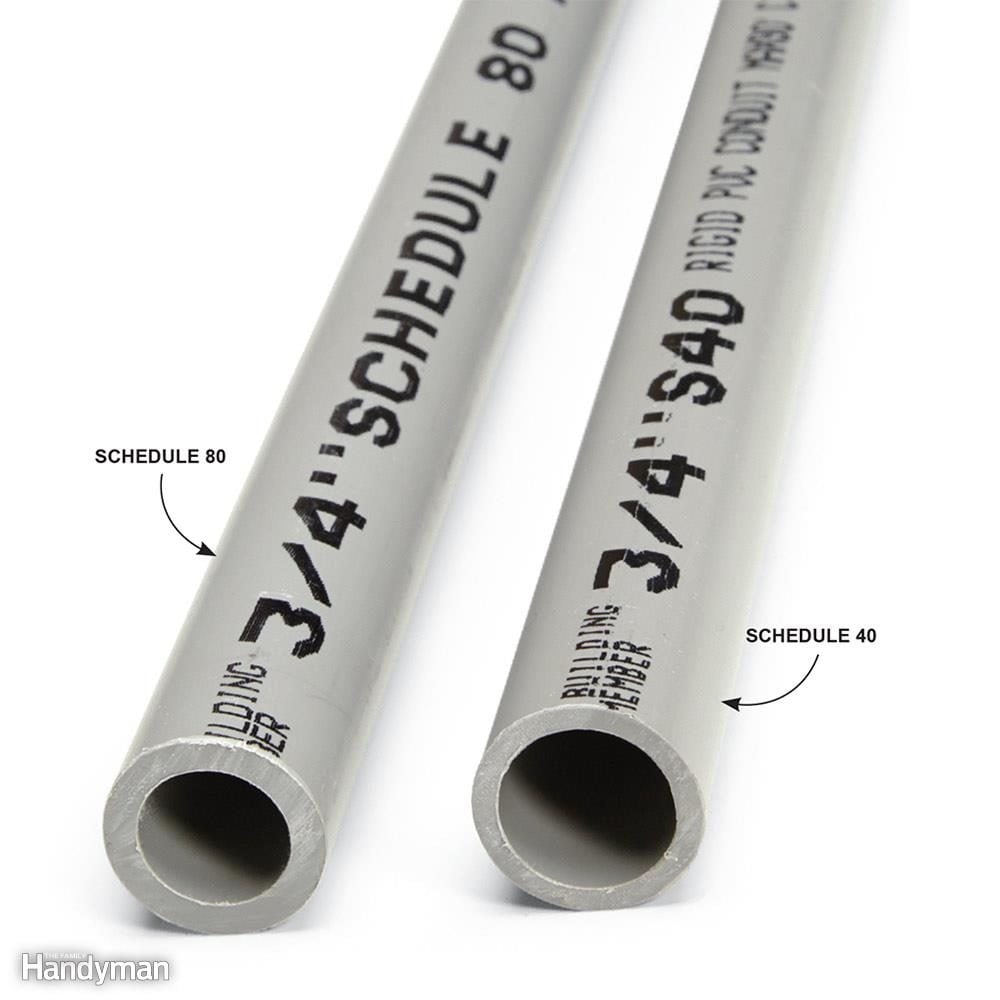

Schedule 40 PVC conduit is cheaper and has a larger inside diameter, so it’s easier to pull wires through it. The plastic on Schedule 80 is thicker, but the conduit has the same outside diameter as 40, so the inside diameter is smaller. Always install Schedule 80 conduit in high-traffic areas or any other areas where it could get damaged, like behind a woodpile. The fittings (such as adapters and turns) are the same for Schedule 40 and 80.

THHN (thermoplastic high heat-resistant nylon-coated) is the best wire for pulling through PVC conduit. Other types of wire have a sticky rubber sheathing that makes them almost impossible to pull. Stranded THHN is used on most commercial jobs—it’s more flexible than solid wire, which makes it easier to pull, and it doesn’t spring back when you push it into the electrical box.

If you do end up with a rough edge when you cut PVC conduit, don’t forget to deburr the inside of the cut edge. Burrs can damage the insulation on the wires. There are a lot of fancy deburring tools available, but it’s just as easy to spin a utility knife on the inside of the conduit to smooth it out.

Install 3/4-in. PVC conduit instead of 1/2-in. if (1) you need to pull more than three wires through one section of conduit; (2) there’s any chance you’ll add wires in the future; or (3) if you have a long and winding run. The 3/4-in. conduit doesn’t cost that much more, and it’s a lot easier to pull wire through. Whatever size conduit you use, don’t fill it more than 40 percent with wires.
Single-gang electrical boxes will work, but if you have two or more conduit sections connecting to one box, buy double-gang. The male connectors on the ends of the PVC conduit take up quite a bit of room inside the box, leaving little room for devices. GFCI receptacles and other large devices, like dimmers, fit better in deeper (2-1/8 in.) boxes.

Some PVC pipes require primer, but you don’t need to use primer when gluing conduit and fittings. Home centers usually sell the appropriate glue/cement near the the PVC conduit and fittings.
Measure as carefully as you can so you can avoid dry-fitting your connections. Unlike PVC plumbing pipes, PVC conduit and fittings can be difficult to pull apart once you shove them together. And always wear gloves to protect yourself from the glue.